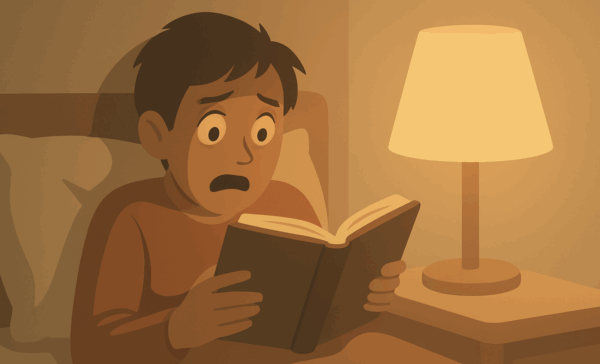They say there’s a fine line between love and hate—and nowhere is that line more tantalizing than in the “enemies to lovers” trope. For romance readers, there’s nothing quite like the thrill of watching two characters who initially can’t stand each other slowly (or grudgingly) fall head over heels. Think Mr. Darcy and Elizabeth Bennet, or that couple in every romantic comedy who starts with a petty feud over something as trivial as coffee preferences before ending up madly in love. This trope captures the drama, tension, and emotional depth that keep romance fans turning the pages late into the night.
But writing an “enemies to lovers” romance book isn’t as simple as slapping together two feuding characters and hoping sparks fly. It’s an intricate dance of character development, emotional growth, and plot pacing. The key to a successful enemies-to-lovers romance lies in making every twist and turn feel authentic—convincing readers that, yes, these two people who were once at each other’s throats do belong together.
So, how do you go from seething glares to stolen kisses? Whether you’re a novice writer embarking on your first novel or an experienced romance novelist seeking to master this iconic trope, this guide will help you craft a love story that’s as believable as it is heartwarming. We’ll cover everything from creating unforgettable romantic leads to crafting romantic tension that leaves readers guessing. Let’s turn those sharp retorts into soft whispers and that bitter rivalry into sweet devotion. Ready to start writing your next romance masterpiece? Let’s dive in!
Understanding the ‘Enemies to Lovers’ Trope in Romance Novels: The Art of Conflict and Chemistry
The “enemies to lovers” trope is a cornerstone of romantic fiction, and for good reason—it’s deliciously complex. At its core, this trope thrives on conflict, romantic tension, and the emotional journey of two characters who learn to see beyond their differences.
In these stories, the protagonists often clash due to misunderstandings, external conflicts, or differing values. Maybe they’re workplace rivals gunning for the same promotion in a contemporary romance. Or perhaps they’re star-crossed lovers from feuding families in a historical romance. Whatever the scenario, the tension between them is palpable, creating a dynamic that practically demands resolution.
The charm of this trope lies in its transformation: watching characters grow, evolve, and ultimately discover that their biggest rival might just be their perfect match. To keep your readers hooked, focus on building layers of emotional depth alongside the initial conflict. Remember: the transition from hate to love must feel natural. If readers sense even a whiff of artificiality, you risk losing their trust faster than you can say “Meet cute.”
What is an Enemies-to-Lovers Romance?
An Enemies-to-Lovers romance is a beloved trope in the romance genre where two characters, often with a history of conflict or animosity, gradually develop romantic feelings for each other. This type of romance typically involves a slow-burning tension, witty banter, and a deep emotional connection between the two leads. Whether it’s a contemporary romance set in a bustling city, a romantic comedy filled with laugh-out-loud moments, or a historical romance steeped in societal expectations, the Enemies-to-Lovers trope can be found across various sub-genres.
In an Enemies-to-Lovers romance, the initial conflict between the two characters can stem from a variety of sources, such as a past misunderstanding, a rivalry, or a clash of personalities. As the story progresses, the characters are forced to work together, spend time together, or confront their differences, leading to a gradual shift in their feelings towards each other.
The key to writing a successful Enemies-to-Lovers romance is to create a believable and nuanced portrayal of the character’s emotional journey. This can be achieved by:
- Developing complex and multi-dimensional characters with rich backstories and motivations.
- Crafting a compelling narrative that explores the characters’ conflicts and vulnerabilities.
- Building a slow-burning tension through witty banter, awkward encounters, and subtle moments of vulnerability.
- Creating a satisfying payoff as the characters finally acknowledge and act on their feelings for each other.
By focusing on these elements, you can craft a romance story that resonates with readers and keeps them invested in the characters’ journey from enemies to lovers.
Creating Believable Characters: The Heart of an Enemies to Lovers Story for Romance Writers
In any romance novel, the main character is the heart and soul of the story. For “enemies to lovers,” you need to develop characters with depth, complexity, and flaws that make their animosity feel real—but not irreparable.
Start with well-rounded backstories. What caused these two characters to clash in the first place? Is it a professional rivalry, a misunderstanding, or some lingering baggage from a past encounter? Give them motivations that justify their initial animosity while leaving room for growth.
Avoid making one character overly antagonistic. While it’s tempting to paint one of them as the villain, readers are more likely to root for a love story between two equally compelling individuals. Think of it as a balancing act: both romantic leads should feel like they’re bringing something unique to the table.
Finally, don’t forget the emotional growth. As the story progresses, allow both characters to challenge each other’s beliefs, exposing vulnerabilities and opening the door to romantic tension. This is where the magic happens—when two characters learn from each other and become better versions of themselves.
Building Romantic Tension in Romantic Fiction: Keep Readers Guessing
Romantic tension is the lifeblood of any enemies-to-lovers story, and it’s crucial for anyone looking to write romance. This is what keeps readers glued to the page, waiting for that moment when the characters go from rivals to something more.
Start with a “meet cute” that sets the stage for their animosity. Maybe one character steals the other’s parking spot, or they’re forced to work together despite their obvious disdain for one another. From there, build tension through sharp banter, stolen glances, and moments of unexpected intimacy.
The key is to keep readers guessing. Just when they think the characters are ready to admit their feelings, throw in a plot twist or misunderstanding to keep the conflict alive. But don’t overdo it—romantic tension should feel organic, not forced.
And when it’s time for that first kiss? Make it count. This moment should feel earned, a culmination of the emotional journey your characters have been on. Whether it’s a passionate kiss in the rain or a hesitant brush of lips in the middle of an argument, it should leave readers breathless.
Writing Dialogue and Conversation that Sparks Tension
Writing dialogue and conversation that sparks tension is crucial in creating a compelling Enemies-to-Lovers romance. Here are some tips to help you craft dialogue that sizzles with tension:
- Use Subtext: What characters say and what they mean can be two different things. Use subtext to convey underlying emotions and tensions. For instance, a character might say, “I can’t stand you,” but their body language or tone might suggest otherwise.
- Employ Witty Banter: Quick-witted exchanges can create a sense of tension and attraction between characters. Think of the sharp, playful exchanges between Elizabeth Bennet and Mr. Darcy in “Pride and Prejudice.”
- Show Vulnerability: Characters who are vulnerable and open with each other can create a sense of intimacy and connection. Allow moments where the characters let their guard down, revealing their true feelings and fears.
- Use Body Language: Non-verbal cues like body language and facial expressions can convey tension and attraction. A lingering glance, a slight touch, or a clenched jaw can speak volumes.
- Keep it Concise: Dialogue should be concise and to the point. Avoid long, rambling conversations that can diffuse tension. Each line of dialogue should serve a purpose, whether it’s to advance the plot, reveal character, or heighten tension.
By mastering these techniques, you can create dialogue that not only sparks tension but also deepens the emotional connection between your characters, making their journey from enemies to lovers all the more compelling.
Plotting Your Enemies to Lovers Romance: The Whole Story
A strong plot is essential for any romance novel, but it’s especially important for an “enemies to lovers” story. The conflict between your main characters should drive the narrative, with every plot point serving to deepen their relationship.
Start with external conflicts that force the characters to interact. Maybe they’re competing for a coveted prize, or they’re stranded together on a cross-country road trip. These situations create opportunities for the characters to confront their differences while building romantic tension.
As the story progresses, shift the focus to internal conflict. This is where your characters’ emotional depth comes into play. Explore themes like trust, forgiveness, and vulnerability as they begin to see each other in a new light.
And, of course, don’t forget the happy ending. Readers expect a satisfying resolution that ties up the main plot and the love story. Whether it’s a grand romantic gesture or a quiet moment of understanding, make sure your ending leaves readers swooning.
Exploring Subgenres: Enemies to Lovers Everywhere
One of the great things about the “enemies to lovers” trope is its versatility across various romance books. It works in almost every subgenre of romance, from contemporary romance to paranormal romance.
In historical romance, the conflict might stem from societal expectations or class divides. In romantic comedy, the humor often comes from the characters’ over-the-top antics and misunderstandings. And in paranormal romance, you might have two supernatural beings with opposing agendas—think vampires and vampire hunters, or witches and werewolves.
No matter the subgenre, the core story remains the same: two characters overcoming their differences to find love. The trick is to adapt the trope to fit the unique elements of your chosen genre while staying true to the emotional journey at the heart of the story.
Writing Love Scenes and First Kisses: The Sweet Spot
Love scenes are a pivotal part of any love story, and they’re especially important in an enemies-to-lovers story. These moments should feel like a natural extension of the character’s journey, deepening their connection and advancing the plot.
The first kiss is a make-or-break moment. It should be packed with emotional depth, reflecting the characters’ growth and the romantic tension that’s been building throughout the story. Don’t rush it—let the anticipation build so that when the kiss finally happens, it feels like an explosion of pent-up emotion.
When writing sex scenes, remember that less is often more. Focus on the emotions and the connection between the characters rather than the physical details. Your goal is to create an intimate, meaningful moment that resonates with readers.
Avoiding Common Pitfalls in Enemies-to-Lovers Romance
While the Enemies-to-Lovers trope can be a compelling and romantic storyline, it can also be prone to certain pitfalls. Here are some common mistakes to avoid:
- Overusing Clichés: Avoid relying on tired clichés like the “forced proximity” trope or the “fake relationship” plot device. While these can be effective, overuse can make your story feel predictable. Instead, find fresh ways to bring your characters together.
- Creating Unrealistic Conflicts: Conflicts should be believable and nuanced, not contrived or convenient. Ensure that the reasons for the characters’ animosity are grounded in their personalities, backstories, and circumstances.
- Failing to Develop Characters: Characters should be fully fleshed out with rich backstories and motivations. Avoid one-dimensional characters who exist solely to serve the plot. Instead, create multi-faceted individuals with their own goals, fears, and desires.
- Rushing the Romance: The romance should develop gradually, not suddenly or conveniently. Allow time for the characters to realistically move from animosity to affection. This slow burn is what makes the payoff so satisfying.
By steering clear of these common pitfalls, you can create a more authentic and engaging Enemies-to-Lovers romance that resonates with readers and stands out in the crowded romance genre.
Avoiding Clichés and Stereotypes
Clichés and stereotypes can be a major pitfall in romance writing, particularly in the Enemies-to-Lovers trope. Here are some tips to help you avoid clichés and stereotypes:
- Create Complex Characters: Avoid relying on tired tropes like the “alpha male” or the “feisty heroine.” Instead, develop characters with unique personalities, strengths, and weaknesses. Give them depth and complexity that goes beyond surface-level traits.
- Develop Nuanced Conflicts: Conflicts should be multi-layered and nuanced, not simplistic or convenient. Explore the underlying reasons for the characters’ animosity and how these conflicts evolve over time.
- Avoid Stereotypes: Avoid relying on stereotypes like the “damsel in distress” or the “brooding hero.” These can make your characters feel flat and unoriginal. Instead, strive for authenticity and individuality in your character portrayals.
- Keep it Fresh: Try to put a fresh spin on familiar tropes and plot devices. Look for unique angles or unexpected twists that can set your story apart. For example, instead of a typical workplace rivalry, consider a conflict rooted in a shared past or a clash of deeply held values.
By focusing on originality and depth, you can avoid clichés and stereotypes, creating a romance story that feels fresh, engaging, and true to life. This will not only captivate your readers but also elevate your writing in the romance genre.
Writing Romance: Start Your Enemies to Lovers Romance Writing Today
The “enemies to lovers” trope is more than just a fan favorite—it’s a masterclass in character development, emotional depth, and romantic tension for any romance writer. It challenges you as a writer to craft a love story that feels authentic and satisfying, taking readers on an emotional rollercoaster they won’t soon forget.
So, aspiring romance writers, are you ready to start crafting your next enemies-to-lovers masterpiece? Whether it’s your first novel or your tenth, let your imagination run wild. Put your unique spin on the trope, explore themes that resonate with you, and give readers the enjoyable experience they crave.
Have you completed your manuscript and are ready to share it with the world? Spines stands as your gateway to the publishing realm, embodying the future of publishing. With a combination of advanced technology and publishing experts, our platform is designed to revolutionize your publishing journey, offering a suite of comprehensive services. These include detailed editing and proofreading, captivating cover creation, global distribution, and strategic marketing toolkits.
With Spines, your book can transcend the ordinary and thrive in the new era of publishing. Sign up for free to start your self-publishing journey today. Because every romance deserves to be told—and who knows? Yours might just become the next bestseller.
Happy writing! Let the sparks fly!







